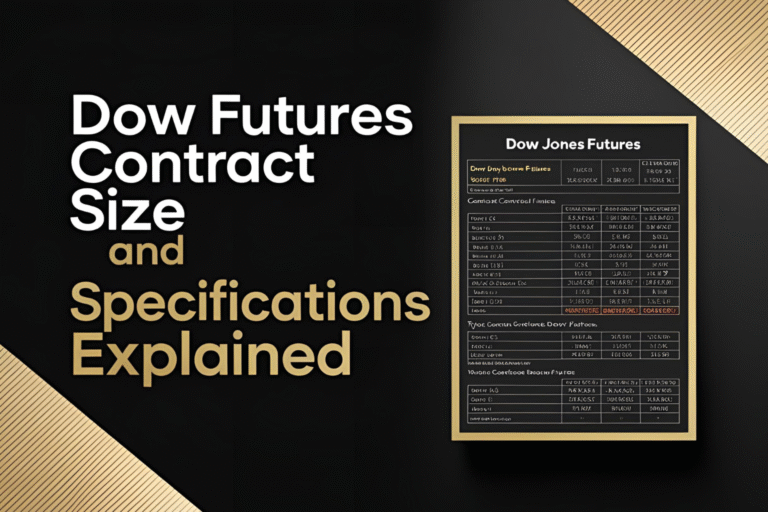DJIA (Dow) Futures Explained: What They Are and How They Work
Introduction
If you’ve ever heard the term DJIA futures on financial news or trading platforms and wondered what it means, you’re not alone. DJIA futures—also known as Dow futures—are financial contracts that let traders speculate on or hedge against future movements of the Dow Jones Industrial Average (DJIA). In this guide, we’ll break down exactly what DJIA futures are, how they work, and why they matter, especially for beginners.
What Are DJIA Futures?
DJIA futures are standardized contracts traded on futures exchanges like the CME (Chicago Mercantile Exchange) that represent a future value of the Dow Jones Industrial Average.
They allow traders and investors to:
- Speculate on whether the DJIA will go up or down.
- Hedge against potential losses in a portfolio that tracks the DJIA.
- React early to economic events outside of regular trading hours.
In simple terms, you’re making a deal to buy or sell the DJIA index at a future date, based on its expected price.
How Do DJIA Futures Work?
Here’s how it typically works:
- The contract represents a value tied to the DJIA index.
- Traders agree to buy or sell the contract at a specific price in the future.
- Futures are marked to market daily—this means gains or losses are settled each day until the contract expires.
- Most traders don’t hold the contract to expiry; they close their position before that to take profits or limit losses.
Contract Sizes and Variants
The CME offers different types of DJIA futures:
- E-mini Dow Futures (symbol: YM): Most common, with a smaller contract size.
- Big Dow Futures: Larger, institutional-focused contracts.
- Micro E-mini Dow Futures: Even smaller, suitable for individual traders.
Example:
- If the DJIA is trading at 35,000, one E-mini contract might be worth $5 x 35,000 = $175,000 in notional value.
Why Traders Use DJIA Futures
Here’s why DJIA futures are so popular:
- 24-Hour Trading: They trade nearly around the clock, even when stock markets are closed.
- Market Sentiment Preview: Futures often indicate how the market will open the next day.
- Leverage: Traders can control a large position with a smaller margin deposit.
- Diversification & Hedging: Investors can protect portfolios against Dow-related losses.
Pros and Cons of DJIA Futures
| Pros | Cons |
|---|---|
| Access to 24/5 trading | High leverage = high risk |
| Lower cost via micro contracts | Requires understanding of margin |
| Portfolio hedging possibilities | Price volatility |
| Predictive of market sentiment | Can be complex for new traders |
Who Should Consider DJIA Futures?
DJIA futures are ideal for:
- Day traders looking for index exposure.
- Long-term investors wanting to hedge.
- Active traders seeking opportunities in extended hours.
However, they’re not suited for total beginners without proper education and risk control.
Conclusion
DJIA futures are a powerful tool for trading and investing, offering access to one of the world’s most followed stock indices. While they carry risk, understanding the basics—like contract types, trading hours, and use cases—can give you an edge in the market.
FAQs
Q1. What is the full form of DJIA?
DJIA stands for Dow Jones Industrial Average, a stock market index tracking 30 large U.S. companies.
Q2. Can beginners trade DJIA futures?
Yes, but with caution. Start with micro contracts and use proper risk management.
Q3. Are DJIA futures the same as Dow Jones ETFs?
No. DJIA futures are derivatives, while ETFs like DIA directly track the index and trade like stocks.
Q4. Where can I trade DJIA futures?
Major platforms like CME Group, Interactive Brokers, TD Ameritrade, and NinjaTrader offer access.
Q5. What time do DJIA futures start trading?
They trade nearly 24 hours from Sunday evening to Friday evening (U.S. Eastern Time), with a short daily break.




